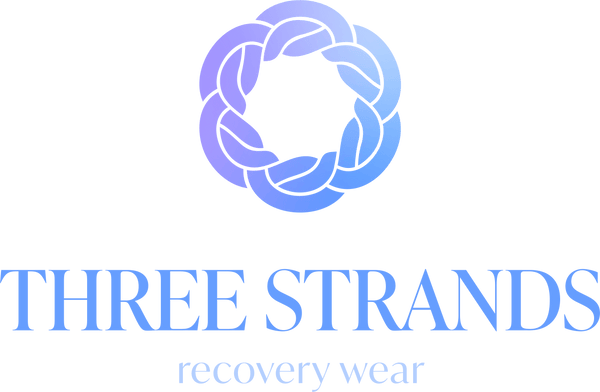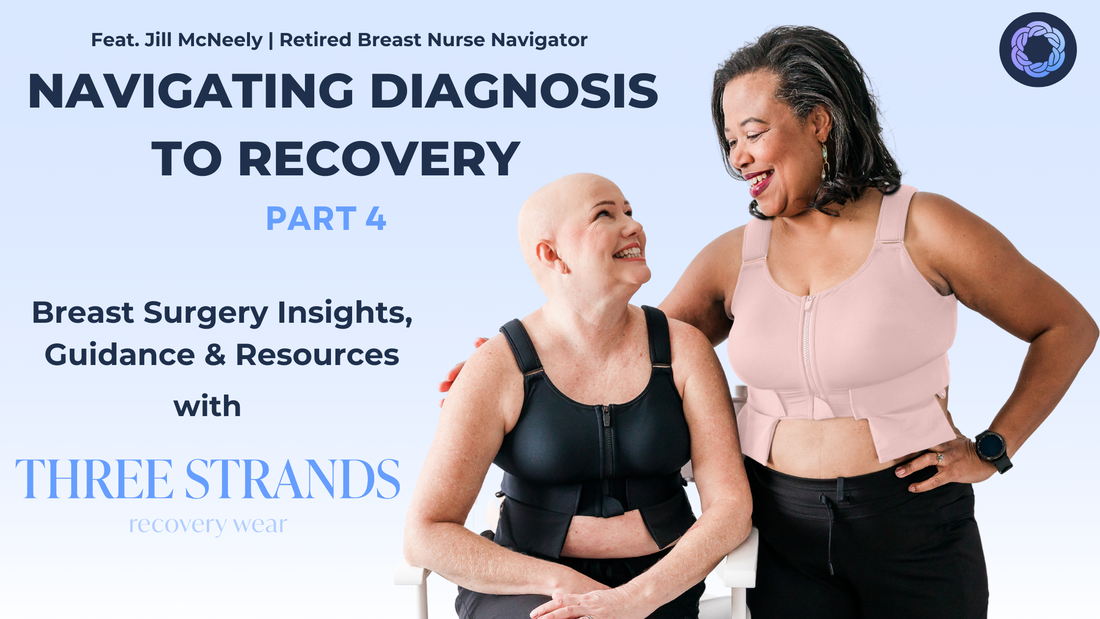In this fourth episode of our five-part series, we dive deep into life after breast surgery, particularly those critical first 1-2 weeks. Too often, women feel uncertain about what to expect after waking up from surgery, even after making the tough decision to undergo it. We’re honored to feature insights from Mrs. Jill McNeely, a retired breast nurse navigator, and Nancy Wyrick, a breast cancer survivor. Together, they share what you need to know—from waking up in the hospital, to recovery at home, to long-term monitoring.
Here’s what you’ll learn in this blog:
Embrace Your Strength
Let’s take a moment to honor the journey you've been on. Since receiving your surgery date, fear and uncertainty have likely weighed on you. But as you approach or finish your surgery, take a deep breath and allow yourself to feel some relief.
The strength, courage, and resilience it has taken to get here are remarkable. This blog is here to guide and support you on your road to recovery, providing reassurance every step of the way.
What to Expect Post-Op & Key Things to Know
Recovery varies depending on the type of surgery you’ve had, but there are a few universal things to keep in mind during those first few weeks:
- Stay hydrated. Drinking 8-12 cups of water daily is crucial, especially when taking pain medication.
- Keep up with nutrition. Fueling your body will help with healing.
- Make sure your care team properly educates you on post-op instructions, including dressings, drains, medications, and when to contact them with concerns. To learn more about drains visit this link.
At home, it’s important for both you and your caregiver to monitor your recovery closely. Be sure to call your care team if:
- You’re emptying drains every 30 minutes.
- Your drain fluid changes color to a thick white or green.
- You have a fever over 101°F or more.
- Your pain is not manageable with medication.
- You’re bleeding through bandages or have uncontrolled nausea.
- You have a gut feeling something isn’t right. There are no bad questions in this situation—always call if you're unsure.
Post-Op Clothing
In the first 2-3 weeks post-surgery, comfort and accessibility are key. Plan ahead and purchase cozy, easy-to-wear clothing that you can wash before your surgery. Here’s what to look for:
- The Resilience Bra: A post-surgical bra with drain management, designed for long-term use. Its adjustability helps you adapt to changes in your body during recovery.
- Cozy Pajamas: Opt for short sleeves for easy IV access in the hospital. Choose pants with a stretchy waistband, and if you prefer button-up tops, go for ones with larger buttons.
- Zip-Up Hoodie: A full-zip hoodie is ideal—avoid pullover styles, as they’re more difficult to manage post-surgery.
The Resilience Bra is especially helpful for drain management, eliminating the need for additional items like aprons or special pockets in pajamas. It’s also discreet under clothing, making it a practical, long-term solution.
Monitoring After Breast Surgery
After surgery, monitoring yourself and keeping up with appointments is crucial. Your care team will guide you on how often you need to be monitored based on the type of surgery you’ve had. Jill McNeely outlines general guidelines for post-op monitoring:
- Lumpectomy: You’ll typically need a diagnostic mammogram 6 months after radiation (if applicable). You may have a mammogram every 6 months for the first two years.
- Mastectomy: If you've had bilateral reconstruction, your care team may recommend yearly or biennial MRIs. For those with a single mastectomy, annual mammograms for the unaffected breast and MRIs for the reconstructed breast are common.
No matter where you are in your recovery journey, take pride in your resilience. What you’ve been through is unimaginable, but you’ve proven your strength, and you are more powerful than you know.
For more information about Three Strands Recovery Wear, including retail locations, online purchasing options, and ambassador opportunities, visit threestrandsrecoverywear.com. For questions, email info@threestrandsrecoverywear.com. To purchase the Resilience Bra, use the store locator to find a retailer near you or buy it online here for 15% off your first purchase.
Please note that while this series provides valuable insights and personal experiences, it is not a substitute for professional medical advice, diagnosis, or treatment. Viewers are encouraged to consult their physicians or healthcare providers for any medical concerns.


